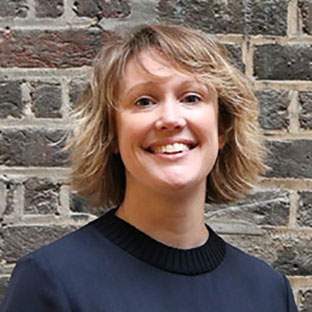Earlier this month, the chief executives of the Harris Federation and the Outwood Grange Academies Trust attracted headlines.
Their argument is that some children need an extra year of study to give them a real chance of achieving a good grade when they sit their exams aged 16. Ofsted’s concern – shared by many – is that this allows pupils less time to benefit from the broader range of subjects studied before GSCEs start, and less time to develop skills and understand the value of further study in these subjects.
The story reflects a wider debate about a perceived tension between delivering a broad and arts-rich education which engages pupils of all talents, and ensuring that all children leave school with the skills and qualifications that are demanded in the wider world.
As champions of the arts who also have a proud history of opening up access to education and qualifications, this debate is of particular significance to us at the RSA. And it’s a driving force behind our Learning About Culture project, the latest report for which – Arts-Rich Schools – is published today.
The RSA Learning About Culture project
By evaluating the impact of five arts-based learning projects on essential skills such as creativity, literacy and communication, Learning About Culture will give us better evidence than we’ve ever had before about how schools can focus on arts-based learning in a way that delivers core skills and good qualifications.
But headline results always need to be understood in the context of existing practice on the ground. That’s why today’s report looks at the experiences of schools who are already offering their pupils an arts-rich experience across the curriculum.
Inspiring stories from arts-rich schools
Each of the eight schools featured in Arts-Rich Schools has a unique context and a different arts offer for its pupils.
The schools include maintained schools, academies and free schools, and both primaries and secondaries, from across England.
They have all faced some challenging decisions about how to allocate staff and resources, but they have often found creative solutions which have enabled them to maintain their focus on the arts without compromising in other areas.
An overview of their stories illustrates the variety of approaches they have used:
- Gomersal Primary School pupils have half a day a week of specialist arts teaching. “The art room allows students to put a different hat on and learn in a different atmosphere with a different set of rules,” one teacher told us. The school also promotes student voice in the arts through their ‘Arts Council’.
- Music is at the centre of Feversham Primary Academy in Bradford, with at least three lessons a week for all pupils in the dedicated music room and subsidised instrumental music lessons. Teachers use the evidence-informed Kodály method (exercises and games based on rhythm and singing) across the curriculum.
- Ramsgate Arts Primary School is a free school which has placed arts at the centre of the curriculum. The school day has been extended to accommodate an ‘Arts Curriculum’ every Monday to Thursday afternoon. The school has partnerships with local galleries and practicing artists who work as teaching assistants.
- Classrooms are named after famous artists at Putnoe Primary School in Bedford. Unusually for a primary school, the staff structure includes an arts team of specialist teachers and teaching assistants. The school has seven school performances a year and has been awarded a Platinum Artsmark.
- Riddlesdown Collegiate has a ‘college’ and separate building focused on the Creative and Performing Arts. A student told us it was “a place to let go, to be free, to express yourself. A haven for those who don’t fit in”.
- Global Academy in Hayes is a University Technical College sponsored by media company Global. Students have regular contact with people in broadcasting and access to state-of-the-art media equipment: “I think it is transforming some students’ lives...that push towards getting into the creative industries.”
- Formby High School in Liverpool offers a wide range of GCSE arts subjects with no limit on how many pupils can study. There is extensive outreach to local primary schools through a community arts coordinator, and Formby students have a range of opportunities to build cultural capital. “I didn’t used to be that confident, so Performing Arts have helped,” said one student.
- Shaftesbury School in Dorset has established arts education as part of its Church of England school requirement to help students “discover life in all its fullness.” The secondary school has a dedicated arts teaching team who join up activities across the arts subjects, for example, bringing textiles expertise to fine arts lessons.
Creative solutions
What can other schools learn from these case studies?
We don’t make recommendations here: before doing that it’s necessary to consider the results of the five evaluations which finish later this year.
However, we do set out some questions for school leaders who want to increase their focus on the arts.
These questions are informed by the common strategies summarised in the report; we ask school leaders to consider whether they can employ similar approaches to support their journey to becoming arts-rich.
For example:
- Can you mirror some of the creative strategies the schools have used to resource more specialist staff?
- Are there spaces within or beyond the school that can provide a focus for your arts activities?
- Would you benefit from increased partnership working? Have you joined your Local Cultural Education Partnership?
Informing the arts education debate
The headlines about an extra GCSE year will die down, but the wider debate about how to achieve both educational breadth and strong outcomes will continue. (And it’s interesting to note that some of the schools in today’s report have both an arts-rich offer and an early GCSE start).
We hope that the RSA Learning About Culture project project - through today’s report and the results of our evaluations later this year - will inform that debate.
It can do so by improving our understanding of the impact of the decisions made by schools and policymakers on the skills, experiences and achievements of the children they serve.
Read the full Arts-Rich Schools report
Related articles
-
Has Ofsted’s new inspection framework created an opportunity for arts education?
Fran Landreth Strong
Arts education has taken a beating in recent years. A new focus on curriculum, rather than outcomes, is a reason to be optimistic.
-
Cultural organisations working with schools – the RSA needs your insights!
Laura Partridge
If your cultural organisation works with schools in England, we want to hear from you! How do you understand the difference your work makes to children’s learning? Take our survey.
-




Be the first to write a comment
Comments
Please login to post a comment or reply
Don't have an account? Click here to register.